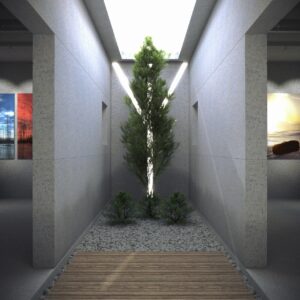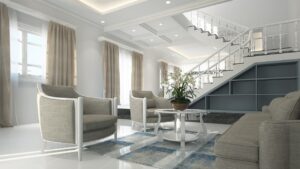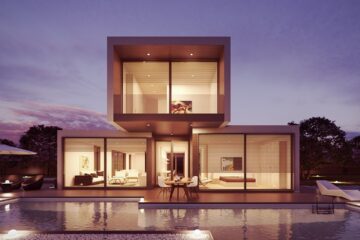Sunlight can heal us
The sun is the source of life, light, and heat.
Sunlight boosts our immune system, improves circulation, increases serotonin and endorphins, balances hormones, and helps to establish healthier sleep patterns.
It makes us more positive, energetic, productive, more hopeful. It keeps our body clock (Circadian rhythm) synced. It is good for our eyes, as they don’t get tired so easily.
Sunlight’s benefits for the interior
Natural light brightens up the rooms and makes them look bigger, more inviting. Enlivens all the colors better than artificial light and brings energy to the space.
It enhances natural materials -like wooden floors- beautifully.
It naturally disinfects, kills bacteria and fungi, hinders the growth of toxic organisms, prevents mold and mildew buildup. (That’s why the orientation of kitchens and bathrooms is so important.)
It is better for indoor plants than artificial light.

Photo Credit: Aenigmatis-3D, Pixabay
Solar power
Heating a home with the sun’s heat can be active, or passive.
In an active solar system solar panels absorb the sun’s heat and store it in rock beds, water tanks. Ducts, pipes deliver the heat.
A passive system is when the sun warms up the interior through windows or a “sunspace”. The building is designed in a way that it stores the heat and releases it at night, or when it’s not sunny.
Cleaning with sunlight
You can air your pillows and cushions in the sun from time to time, besides washing bed pillows in the machine regularly.
Air out your mattress outside in the sun, as it traps dust. Duvets should be aired in the shade, so direct sunlight does not dry out the filling.
Even your rugs can benefit from being in the sun, just not for too long, so the colors don’t fade.
Line-dry your sheets and pillowcases, if you can, whenever possible. Take advantage of the whitening and deodorizing effects of the sun!
Upholstered furniture (except for leather) can also be left in the sun to kill dust mites and gain a fresher smell.
Planning your interior for optimum results
The word “daylighting” means bringing natural sunlight into the space for wellbeing, and to save on electricity by using less artificial lighting.
(Full spectrum lights imitate natural light.)
Assess the direction and the amount of natural light during the day, then plan the interior, pick the color schemes, place the furniture, and decorate.
An open floor plan can help create an airy feeling, as sunlight will penetrate the indoor areas easier, and they will be better connected to the outdoors.
It is crucial to take into consideration the orientation of the rooms:
- South-facing rooms get the most sun during wintertime.
- North-facing rooms get enough sunlight in the summer, but without the excess heat.
- East-facing rooms are hit by the sun in the morning.
- West-facing rooms receive the most natural light early in the evening.
Situate bedrooms to face towards sunrise; breakfast rooms to attract the morning sun; living-rooms, kitchens, sunspaces to take advantage of the sun’s light.
Adding a sunroom to your home will ensure that you can enjoy more sunlight.
Patio rooms/solariums/screen rooms are custom- designed structures surrounded by glass/plastic that let natural sunbeams shower this special room with natural light. There is a brick or wood base, and by sliding doors/screens you can let air inside.
You can enjoy the outdoors without being bothered by the elements or the insects.
This addition is a valuable upgrade to your home. Whether for relaxation or various activities, a sunroom is a wonderful place for your family and friends.

Photo Credit: nilabekim, Pixabay
Ways to let more light in
Sometimes you can tear down walls, widen doors and windows.
Install lots of windows and larger doors, even screen doors to make the areas feel bigger.
Interior windows can aid rooms with sharing light.
Open-tread stairs may be an option.
Lighter, brighter colors will reflect more light.
Smoother, shinier surfaces (even polished wood or metal), glassware will make light bounce around.
Mirrors will make the space look bigger.
Light shelves, soffits under high windows reflect light and prevent glare.
Cleaning your windows regularly is a must.
The higher the windows, the deeper into the space natural light can get. (Install clerestory windows.)
Don’t block the windows with dark, heavy furniture, and don’t let them be obstructed by overshadowing plants, tree branches from the outside.
Considering a skylight? TDD’s (Tubular Daylighting Devices) are a smart choice, as these small cylinder-shaped skylights have bottoms that are glazed/diffused, they don’t let sunlight enter strongly.
Feng Shui hints:
Be mindful about what the mirror reflects from the inside and draws in from the outside.
Keep the windows unblocked from the inside and the outside, so you don’t experience frustration and stagnation, and can see a hopeful future.
A skylight is like a hole in the back of the body or head- as the house represents the body. One’s physical and/or financial well-being can be jeopardized.
A skylight needs a Feng Shui cure.
If the skylight is cut into the roof of an existing house, an auspicious date for the project must be chosen, and a blessing ceremony performed.
For your nest’s energy cleansing and energy boost you can also visualize that light fills up every part, nook, inch.

Photo Credit: 4787421, Pixabay
Avoiding whatever can counteract the positive effects of natural light
Keeping out unwanted heat, preventing too much glare, solving the issue of not enough ventilation.
The choice of glass is vital. Highly energy efficient glass will block the sun’s heat.
Use curtains/shades to filter the light, to soften bright sunlight (in the inside and the outside!). With blinds you can control the light’s angle. Thermal blinds let soft light in without the heat. There are amazing products available.
In the outside, you can add a porch to avoid direct sunlight coming in.
Utilize light-colored paving underneath the windows.
To get the maximum of sunlight in winter, and still gain ample shade from the heat of the summer sun, plant deciduous trees, bushes near the windows on the sunny side.
In bedrooms, for the best sleeping conditions, light needs to be blocked out. Blackout blinds or heavier curtains can do the job.
You can follow the sun by starting your day in an east-facing room and moving to a west-facing room in the afternoon.
Photo Credit for Featured Image: Uliana Koliasa, Unsplash
Julianna Kocsis is a Feng Shui Specialist, Organizational Expert, Intuitive Vibrational Catalyst, Textile Design Archivist. She is also the founder of Talila Consulting. Bringing Order and Harmony to your Home, Work and Life.
To book an appointment, contact Us: talilaconsulting.com/contact


